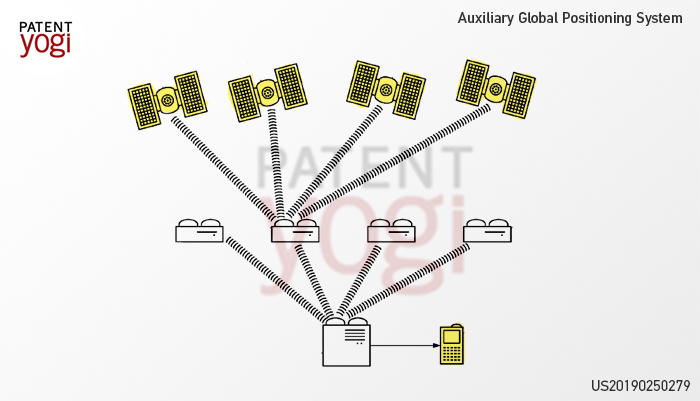
In adverse physical environmental conditions (e.g., under jungle canopy or within urban canyons) as well as under adverse Radio Frequency (RF) it is difficult to obtain accurate positional, navigational, and timing (PNT) information of an individual, such as a Navy Seals in a combat zone. Specifically, it is difficult to obtain exact PNT information by utilizing existing GPS technology in adverse physical environmental conditions.
The existing GPS technology includes GPS satellites obtaining the end-user PNT location through GPS receiver devices. It uses a method called “triangulation” to obtain a signal from at least three satellites. Then, the GPS receiver device measures the distance between each satellite. By knowing each satellite’s exact location and by using clever mathematics, it can work out where the GPS receiver device is on the ground.
US Navy has invented a solution that involves the utilization of GPS satellites, transceiver, an auxiliary GPS device, and receiver GPS device. The invention is backward compatible with existing GPS technology.
The transceiver is a stationary device placed onto the jungle canopy or strategically around a conflict area at a certain height from the ground. Four or more transceivers receive the three or more GPS satellite signals and demodulates the GPS data. It then calculates each transceiver position and velocity from GPS data. Further, transmit the GPS-like signals to auxiliary GPS devices.
The auxiliary GPS device has a receiver for simultaneously receiving the modulated data frequency from transceivers. Therefore, it receives the GPS-like signals from the transceiver devices. The auxiliary GPS device then calculates the pseudo-range to each transceiver. Therefore, it computes its location and generates a simulated GPS signal and transmit the simulated GPS signal to the receiver device.
The receiver GPS device receives and processes the simulated GPS signals as if it were standard GPS signals.
The main advantage of this invention is that it is backward compatible with the traditional receiver GPS device. Another advantage is that the auxiliary GPS device can receive the GPS signals at frequencies different from the standard GPS frequencies. This allows a frequency more conductive to penetrating foliage or buildings. Further, this ability of transceivers to transmit outside of the GPS band will mitigate GPS jamming and spoofing threats. Also, transceivers can output more power than they receive to further enhance the signal strength detected at the auxiliary GPS device.
Publication Number: US20190250279A1
Patent Title: Auxiliary Global Positioning System
Publication date: 2019-08-15
Filing date: 2018-02-14
Inventors: Gregory K. Fleizach, Barry Hunt
Assignee: US Secretary of Navy


